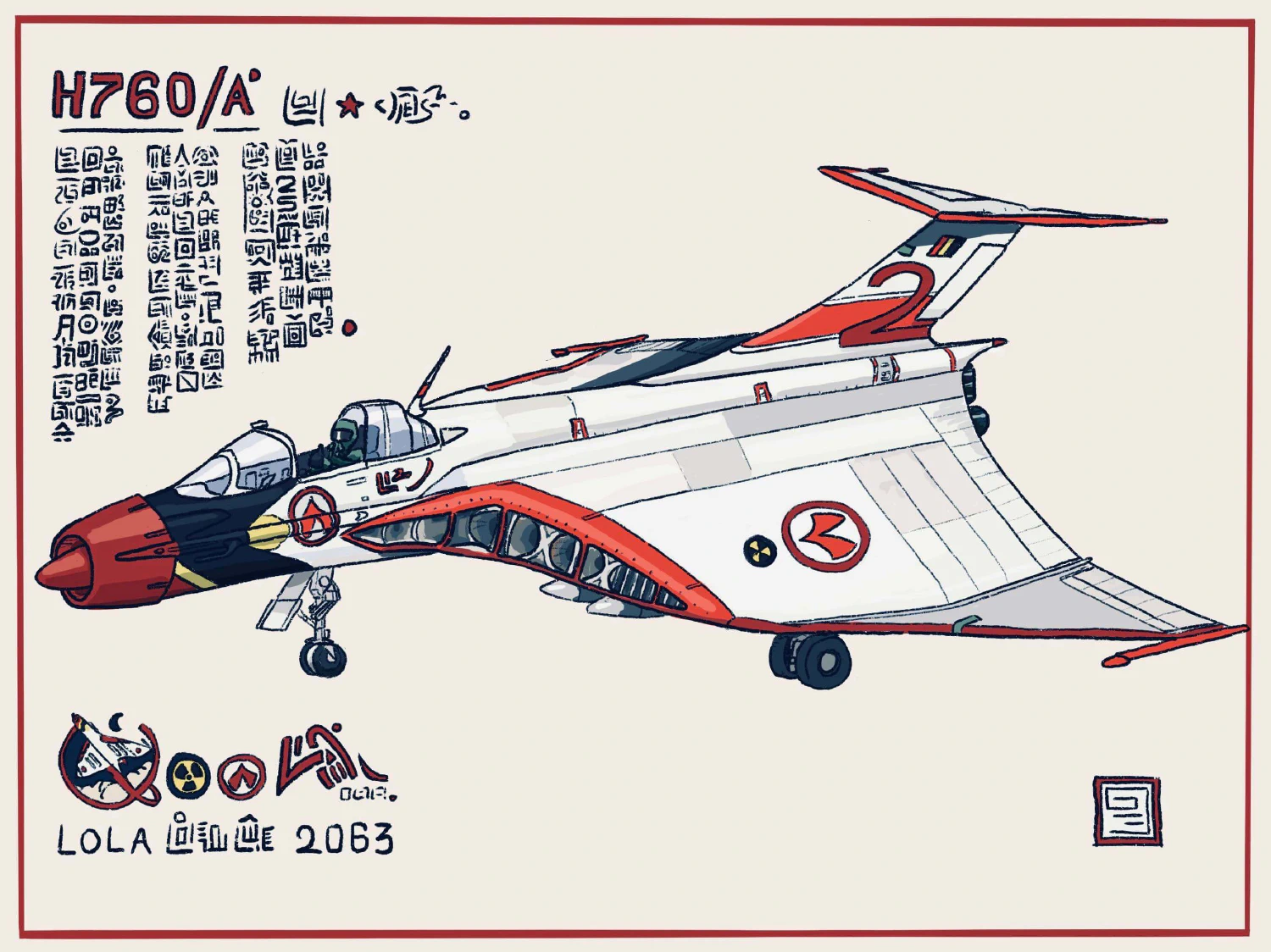NEW Story: Sunday Morning
The Cosmojet

This article is not part of Vekllei canon. It may be old, obsolete or just a bit of fun.
The Ramoin-Dupont H700A “Cosmojet” series are the primary carrier-based fighters of Vekllei. They’re a real bitch to fly. Beloved as they are iconic, variations of the Cosmojet (H600A, B, H500A, etc.) make up the bulk of Vekllei’s total fighter outfit. Unconventional inverted gull wings and embedded turbofan engines make for a striking and uniquely Vekllei aircraft.
And that was the whole point. The first Ramoin-Dupont fighter was always about more than military prestige — it would signal to the world that Vekllei was more than a backwards trough of hamlets and cities. The RD H-series would be an all-nuclear, all-Vekllei fighter. The country had been left scorched by the nuclear exchange at the turn of the millennium. The collapse of the old regime brought about widespread poverty and backwardness. The United States and Europe had emerged with industry mostly intact, and their governments were bankrolling nuclear aircraft programmes. So Vekllei began tentative research into modernising its ageing air force.
The Ramoin-Dupont Aircraft Company was founded by the two cities of its namesake in the cooperative economic boom of the 2010s and 2020s, and the initial development factory and test fields were outdated and burdened by a catalogue of old-fashioned turbojet transport aircraft. The handful of genius engineers in the RD skunkworks set to work, in collaboration with General Reactor, on the new fighter project. As progress was made, the pressure to catch up was eclipsed by excitement as key technological breakthroughs offered Vekllei a chance at leapfrogging conventional military fighters and ushering in a new aluminium-body nuclear fighter. Most crucial were the advancements in Vekllei domestic reactor technology, brought about by General Reactor. Sunburst-style heat exchangers meant lower reactor temps, which allowed for lighter chromium-cadmium shielding and an overall weight reduction of several thousand pounds compared to American and European projects.
After two decades of development, the result was the Aurora. It was still too heavy to properly arm because of the shielding and size requirements of a molten salt reactor. Succeeding generations corrected critical flaws in power management, manoeuvrability, and weight. Fifty years later, the Cosmojet is a direct descendent of that project and stands as the 15th iteration in the nuclear jet programme overall.
The aircraft pictured is named “Lola,” a common girls name in the country. Her nose and forward air intake are painted like a puffin’s break, the national bird. The Vekllei roundel features the logographic character for ‘land of volcanoes,’ the masculine glossary’s (Loh) hieroglyph for Vekllei. The paint on her vertical stabiliser marks her as the second fighter of her squadron.
The nuclear reactor makes the fighter extraordinarily heavy, and despite three powerful engines and an inverse-gull delta wing, the aircraft is most commonly launched by catapult systems, even on land. The indirect air cycle system limits radioactive pollution of the surrounding material and the cockpit is only lightly shielded. Although the reactor saves many thousands of tonnes of jet fuel over the course of its lifetime, day-to-day operations of any carrier fighter require manoeuvrability and reliability. To save weight, the Cosmojet carries only enough chemical fuel for controlled descent using the auxiliary lightweight chemical combustion engine. Her two auxiliary exhausts swivel with the primary flaps, allowing the heavy jet to slow for approach. The iconic inverse-gull wing reduces the strain on landing gear and saves weight by removing the need for fortified (and heavy) landing gear. It also allows for heavy torpedoes to be mounted on the fuselage, which are designed primarily for use against nuclear submarines.
The Cosmojet uses a 2.5MW air-cooled molten salt reactor with an indirect air cycle system powering one chemical-reactor hybrid electric turbofan and two auxiliary segregated turbofans mounted in the wings. The reactor heats liquid metal, which is circulated in radiators by turbopumps and heats air drawn in through the wing and forward intakes. The air is then pumped back into the engines and expelled through one of three exhausts at the rear of the aircraft. In addition, the Cosmojet uses a small chemical combustion engine for take-off and landing and for auxiliary power in the event of reactor malfunction or the EMP effects of a nuclear weapon. The prohibitively strict weight limit means that the Cosmojet only carries enough fuel for take-off and landing.
Vekllei employs nearly 4,000 Cosmojet-series fighters today. All of them are used as supersonic air-superiority fighters. As an island nation with a defensive military posture and a fear of nuclear war, this enormous expenditure is supposed to show results in a global nuclear exchange, much of which will still be delivered by supersonic jet bombers.
If you have any questions or want to interrogate my (limited) aircraft knowledge, go ham! You can read more about Vekllei at www.vekllei.city or clicking on my profile and sorting by posts!
Thanks for reading